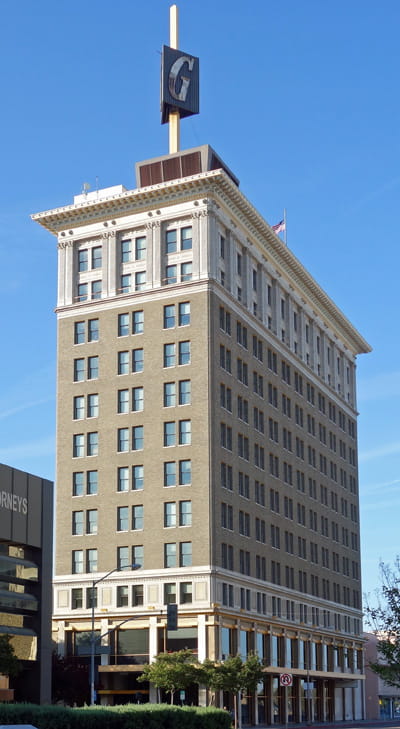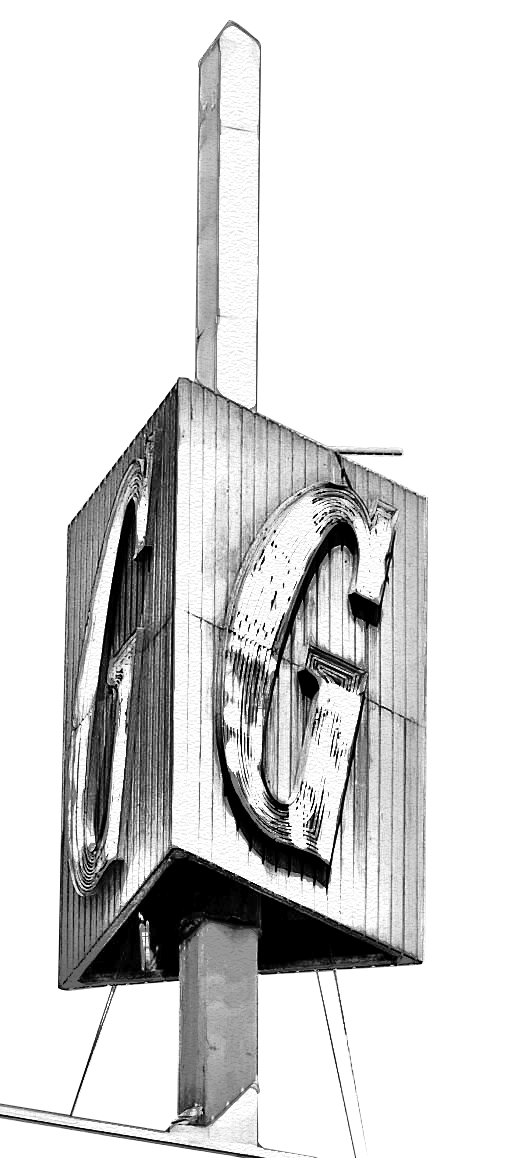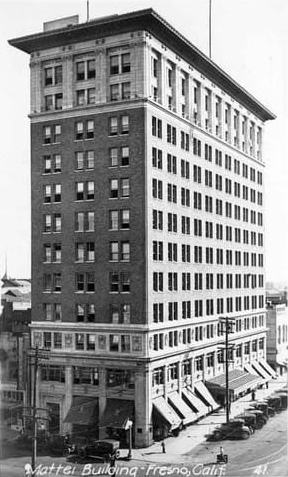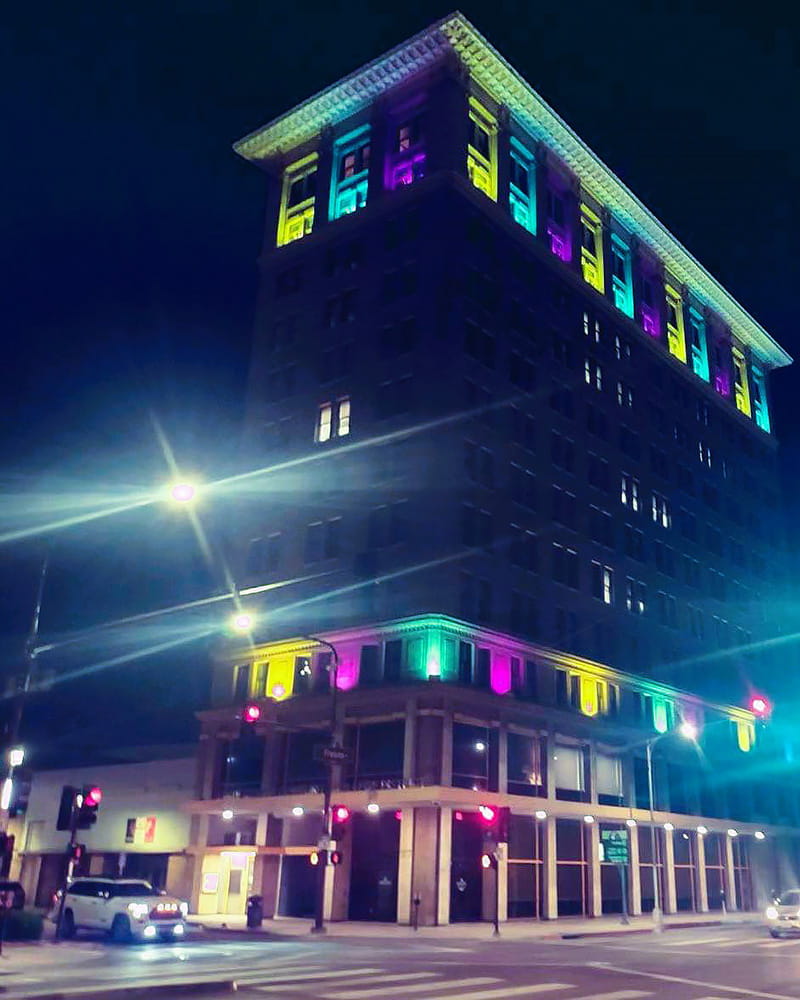District Office Building History
State Center Community College District Office
 In 2018, State Center Community College District purchased the "Guarantee Building" to relocate the District Office, allowing for expansion at Fresno City College. Located at 1171-1177 Fulton Street in downtown Fresno, the building had been renovated multiple times since it was constructed in 1921. The building is 12 stories, 151 ft. tall, 164.63 ft. long and 50.7 ft. wide and is the 7th tallest building in Fresno.
In 2018, State Center Community College District purchased the "Guarantee Building" to relocate the District Office, allowing for expansion at Fresno City College. Located at 1171-1177 Fulton Street in downtown Fresno, the building had been renovated multiple times since it was constructed in 1921. The building is 12 stories, 151 ft. tall, 164.63 ft. long and 50.7 ft. wide and is the 7th tallest building in Fresno.
When the District purchased the building it was in need of some interior renovations. In 2019, interior renovations were completed, staff moved in, and "State Center Community College District" was added to the building's exterior. The District also replaced and upgraded exterior lighting, with plans to later spruce up the G sign atop the building.

The G Sign
For 30 years, the G sign atop the building rotated and changed colors according to the weather. Downtown workers and visitors counted on the G for weather information as they strolled the Fulton Mall, and the G became an iconic part of the Fresno skyline.
When the District inspected the G sign, we hoped the repairs would consist of replacing some rusted panels and the existing lighting system. Unfortunately, the sign is in poor shape. It is currently held in place with thick wires, and the electrical system for the rotation and lighting does not work.
History of 1171 Fulton Street
The Mattei Building
 The City of Fresno was established in 1872. The corner of H and Fresno Streets (adjacent to our parking garage) housed the first commercial district in Fresno due to its proximity to the railroad station. In 1884, Fulton G. Berry bought the Grand Central Hotel, a later well-known social center, at J & Mariposa Streets. After his death in 1910, J Street was renamed Fulton Street in his honor.
The City of Fresno was established in 1872. The corner of H and Fresno Streets (adjacent to our parking garage) housed the first commercial district in Fresno due to its proximity to the railroad station. In 1884, Fulton G. Berry bought the Grand Central Hotel, a later well-known social center, at J & Mariposa Streets. After his death in 1910, J Street was renamed Fulton Street in his honor.
The land at Fulton and Fresno Streets was purchased in 1917 by Andrew Mattei, a Swiss-Italian winemaker and real estate developer for $55,000. Andrew Mattei came to Fresno County in 1890 and started making wine after buying and planting large vineyards. He invested some of his profits in real estate; however, his largest investment was the design and construction of the Mattei Building. Mr. Mattei spent about $1.2 million for the building including a well, direct current steam generators, and tunnels to nearby buildings for power lines and steam pipes. This power plant supplied energy to about six buildings, including steam for heat and cooking at the Hotel Fresno located 1.5 blocks away.
The building was designed by architect Eugene Mathewson and designer, Robert Von Ezdorf, who specialized in high-rise office buildings and served as a chief designer for Cross & Cross Company. Construction on 1171 Fulton began in 1919. The building, with masonry walls and terra cotta ornamentation of vines, leaves and geometric figures, was completed in 1921.
The building is a 12-story steel frame structure with brick and terracotta facing. The structure has a three-part composition: floors 1-3 were faced in terra cotta with decoration; floors 4-10 are brick faced in a simple motif; while floors 11-12 are faced with terra cotta with frieze panels, Corinthian order pilasters and other decorative Items. The building is capped by an elaborate Renaissance revival cornice. The ground floor was occupied by stores and the upper floors were used as offices. Mr. Mattei's corner office suite was on the 11th floor.
Fulton Fresno Building
After Mr. Mattei's death in 1933 and amid the Great Depression, Bank of America foreclosed on the property in 1934. In 1936, a Bank of America Branch was established in the building, and to accommodate a tenant, the building name was changed to "Fulton Fresno Building."
Guarantee Savings Building
 In 1961, Fresno Guarantee Savings & Loan Association acquired the property for its main office. It was remodeled the same year by Robert H. Stevens Associates Architects. Inspiration for the remodel came from the "Sullivanesque" style named for famed Chicago architect Louis Sullivan. The basement, first and second floors were redesigned and remodeled, and the exterior facade was changed to its present condition. The building became known as the Guarantee Building.
In 1961, Fresno Guarantee Savings & Loan Association acquired the property for its main office. It was remodeled the same year by Robert H. Stevens Associates Architects. Inspiration for the remodel came from the "Sullivanesque" style named for famed Chicago architect Louis Sullivan. The basement, first and second floors were redesigned and remodeled, and the exterior facade was changed to its present condition. The building became known as the Guarantee Building.
In 1965, Guarantee Savings & Loan also installed a 15 ft. weather beacon on the roof of the building. A giant rotating G would change color according to weather changes. The G went dark in 1994 due to costs. Power was restored in 2003, but featured only white lights.






